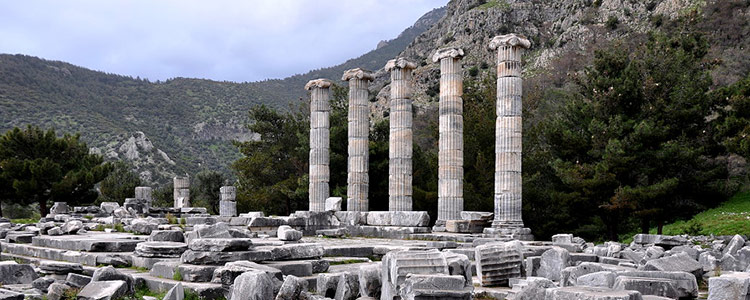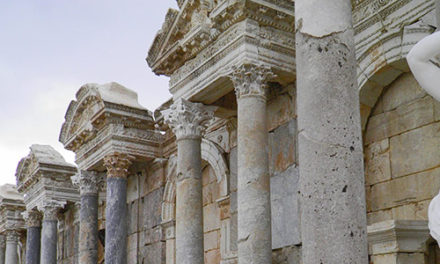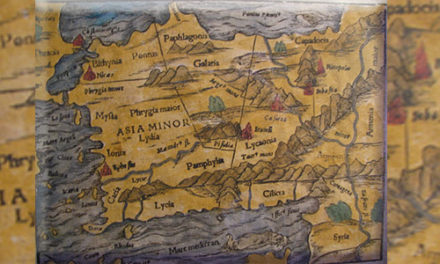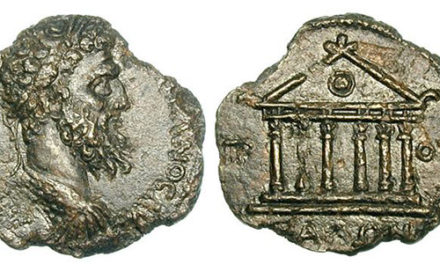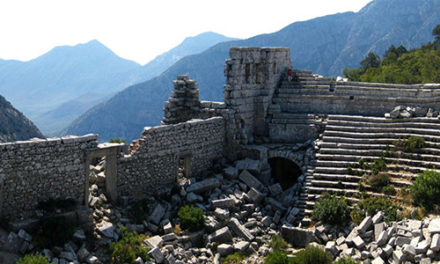Most of the Ionian cities were built around 1050 B.C., geographically between gulf of Smyrna (Izmir) and gulf of Mandalya (Didim). Around 850 B.C. they evaluated a great synthesis from Anatolian cultural aggregation, Aiolis cities, Hittites, Egypt, Assyria, Phoenicia, Micean and created a unique civilization. They laid the foundations of western philosophy and classical arts. By the 6th Century BC, the Ionians entered to the areas of architecture, biology, historiography, philosophy and many other branches of culture which permeated the age of Classical Greece. They were the first to plan cities using a grid system. Hellenistic civilization, that exquisite blend of Greek and eastern culture that flourished between the death of Alexander and the emergence of Rome, first took root in Ionian cities..
Homer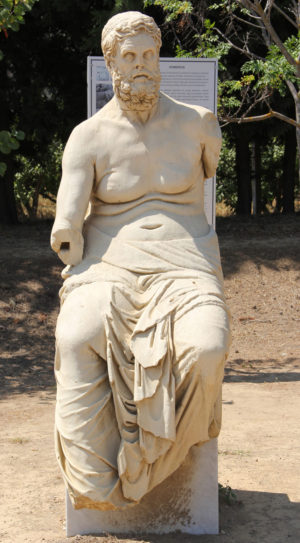
Two of the greatest literary works in history—the Iliad and the Odyssey—were written by an Ionian, Homer, most probably lived in Smyrna (Izmir). The Ionians maintained the adage of the Homeric epics, and early iambic poetry.
Philosophers of nature
One of the most important outcome of the civilized Ionian cities was the creation of scientific thinking and observation. This new methodical ideology suddenly became the biggest step; humankind ever took in the history of civilization. Especially, the city of Miletos became not only a city of trade, but also an intellectual centre of Ionia and of the ancient world. A new generation of the philosophers of nature (this is what they called themselves) or in other words first scientists started the notion of examining the nature free from the effects of religious beliefs and superstition.
The philosopher of nature, Thales (who was also a merchant, mathematician and engineer), the historians Anaximander and Anaximenes, the geographerHecataeus and Kadmos, all lived in Miletos at this time. These scientists, by using the knowledge they accumulated during their visits to Egypt and Mesopotamia and synthesizing this knowledge with their new philosophy,created modern day mathematics, geometry, astronomy, philosophy and most of the other sciences. Thales demonstrated the power of modern science to humankind by calculating the solar eclipse for the first time in history before the event took place.
The Temple of Artemis ( One of the seven wonders of the ancient world)
The Ionians blended science with arts. Built excellent norms of architecture. The temple of Artemis in the city of Ephesus was 55 meters wide, 110 meters long and built completely by marble. The architectural style of famous Ionian cities and buildings has been copied even until the last century, in Europe and America.
The cities Ephesus, Priene, Miletos, Didyma, Magnesia, Teos and Erythrai are the most elegant examples of the great Ionian architecture and city planning. The statues and a lot of other art pieces of the great Ionian tradition are on exhibition in a number of museums mainly in Turkey.
The Ionian civilization was collapsed after Persians invaded whole Anatolia in the 4th century B.C.Coastal Anatolia (IONIA) meanwhile was settled by Greeks. The entire area was overrun by the Persians during the 6th and 5th centuries and fell to Alexander the Great in 334 BC. Anatolia was subsequently divided into a number of small Hellenistic kingdoms (including BITHYNIA, CAPPADOCIA, PERGAMUM, and PONTUS), all of which were eventually absorbed by the Roman Empire in the 1st century BC.
KEY SITES: *Smyrna (Izmir)* Erythrai *Ephesus *Priene * Miletos *Didyma * Teos * Klazomenai * *Sardis* Claros * Colophon *Phokai are of major importance. They are mostly located around or close to Izmir.
MUSEUMS: Masterpieces are exhibited in a number of museums mainly in Turkey. Izmir History and Art Museum, Ephesus Museum, The Miletus Museum contains valuable findings from Ionian Civilization.

